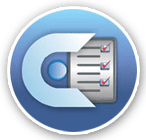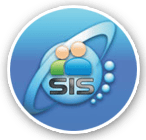Teachers benefit from automated grading, detailed analytics, and standardized testing, though adapting to technology and ensuring fairness remain concerns. While this transformation enhances the educational experience, addressing technical, ethical, and training needs is crucial for maximizing its potential. Here's a breakdown of its effects:
Effect on Students
1. Positive Effects:
• Flexibility: Students can take exams from any location, reducing stress related to travel or scheduling.
• Instant Feedback: Many online exams provide immediate results, helping students identify strengths and weaknesses.
• Improved Accessibility: Students with physical disabilities or those in remote areas can participate without barriers.
• Reduced Exam Anxiety: Familiarity with technology and digital interfaces makes exams less intimidating for tech-savvy students.
• Customization: Adaptive testing tailors questions based on performance, making assessments more personalized.
2. Challenges:
• Technical Issues: Poor internet connectivity or device failure can disrupt the exam experience.
• Digital Literacy: Students unfamiliar with the software may face difficulties navigating the platform.
• Accessibility Issues: Students with disabilities may find some platforms less accommodating.
• Dependence on Technology: Loss of traditional writing skills due to digital-only assessments.
Addressing these challenges requires robust infrastructure, inclusive design, and proper training for students to ensure a fair and stress-free assessment environment.
Effect on Teachers
1. Positive Effects:
• Efficiency: Automated grading saves time, enabling teachers to focus more on instruction and mentoring.
• Data Insights: Detailed analytics provide insights into student performance, helping teachers tailor their teaching strategies.
• Standardization: Online platforms ensure consistent assessment standards and reduce bias.
• Scalability: Teachers can manage a larger number of students and tests simultaneously.
2. Challenges:
• Learning Curve: Teachers need training to effectively use online exam software.
• Monitoring: Ensuring academic integrity through proctoring tools requires effort and adaptation.
• Personalization Limits: Digital exams may not fully accommodate creative or open-ended assessments.
• Limited Assessment Options: Difficulty in assessing subjective responses like essays or oral presentations.
• Customizing Exams: Limited flexibility in designing creative or interactive assessments.
Addressing these challenges involves proper training, support, and robust software solutions to empower teachers to conduct efficient and fair assessments.
Overall Impact
The adoption of online exam software has revolutionized education by introducing convenience and technological advancements. However, ensuring reliable infrastructure, proper training, and fair assessment methods is crucial to maximize its benefits for both students and teachers.
Conclusion: Online exam software has brought significant advancements in educational efficiency, accessibility, and scalability, benefiting both students and teachers. However, to fully realize its potential, institutions must address challenges related to equity, technical reliability, and user adaptability. With the right infrastructure, training, and support, online exams can pave the way for a more inclusive and modern education system.







